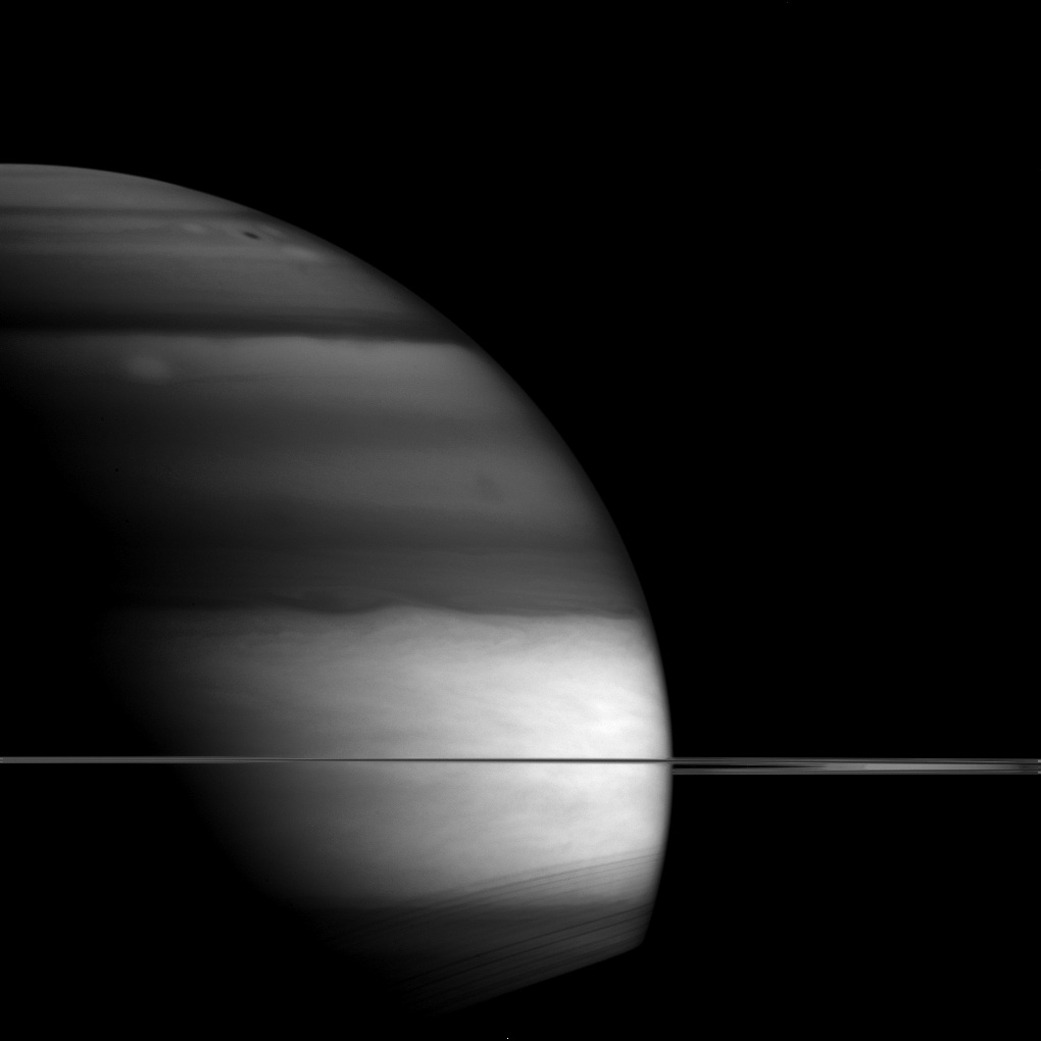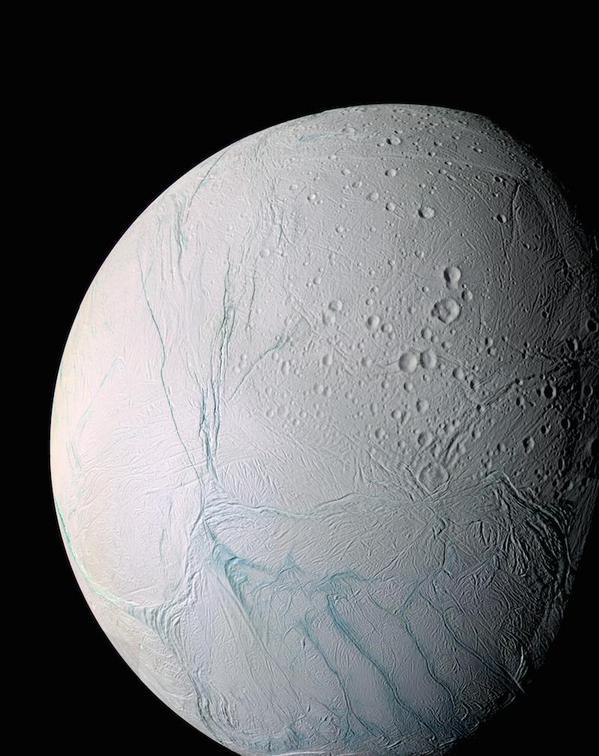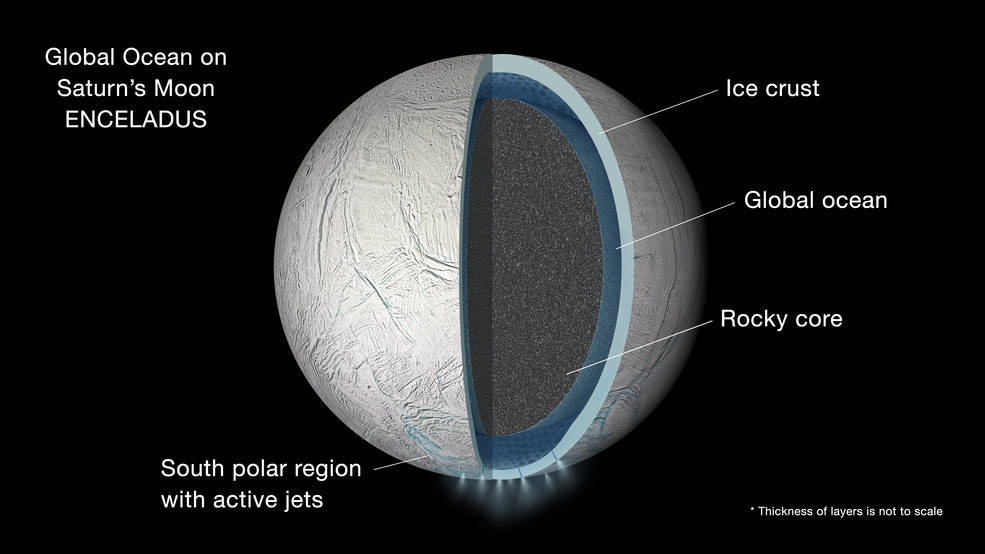Saturn
Beyond the icy moons, Saturn is adorned with thousands of beautiful ringlets, While all four gas giant planets in our solar system have rings made of chunks of ice and rock none are as spectacular or as complicated as Saturn’s. Like the other gas giants, Saturn is mostly a massive ball of hydrogen and helium.
This image of Saturn was taken using an infrared filter. Using this type of filter can help scientists determine the location of clouds in the planet’s atmosphere. The darker areas reveal clouds that are lower in the atmosphere, while the bright areas are higher altitude clouds.
Cassini
Our Cassini mission to Saturn is one of the most ambitious efforts in planetary space exploration ever mounted. Cassini is a sophisticated robotic spacecraft orbiting the ringed planet and studying the Saturnian system in detail.
Since Cassini reached Saturn in 2004, it has captured important data and images. This spacecraft has the ability to see in wavelengths that the human eye cannot, and it can feel things about magnetic fields and tiny dust particles that no human hand could detect. These heightened senses have allowed us to have a better understanding of Saturn, its moons, and the solar system.
Cassini completed its initial four-year mission to explore the Saturn System in June 2008. It has also completed its first mission extension in September 2010. Now, the health spacecraft is making exciting new discoveries in a second extension mission.
What’s Enceladus?
Enceladus is one of Saturn’s many moons and is one of the brightest objects in our solar system. This moon is about as wide as Arizona and displays at least five different types of terrain. The surface is believed to be geologically young, possibly less than 100 million years old.
Cassini first discovered continually erupting fountains of icy material on Enceladus in 2005. Since then, the Saturn moon has become one of the most promising places in the solar system to search for present-day habitable environments.






0 Comments